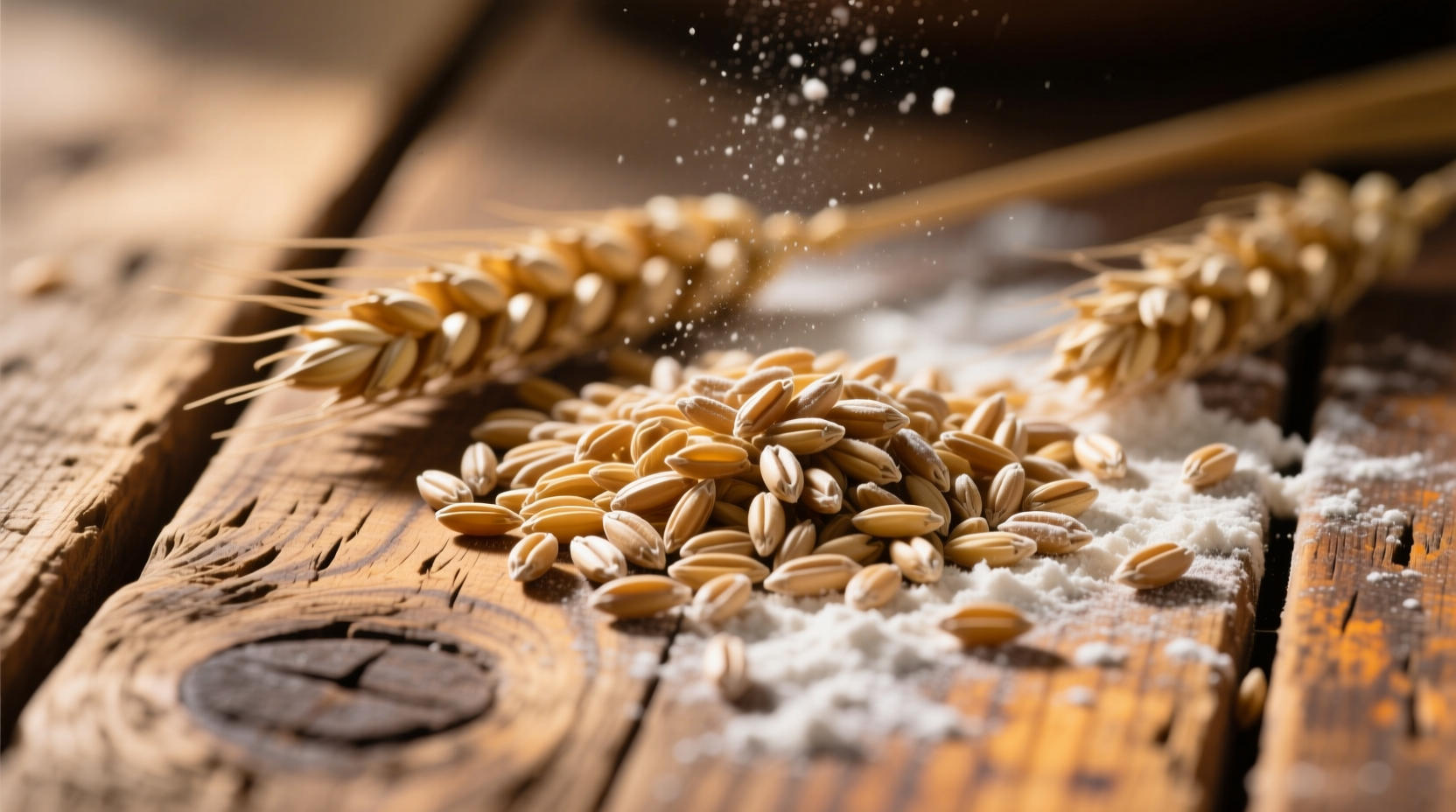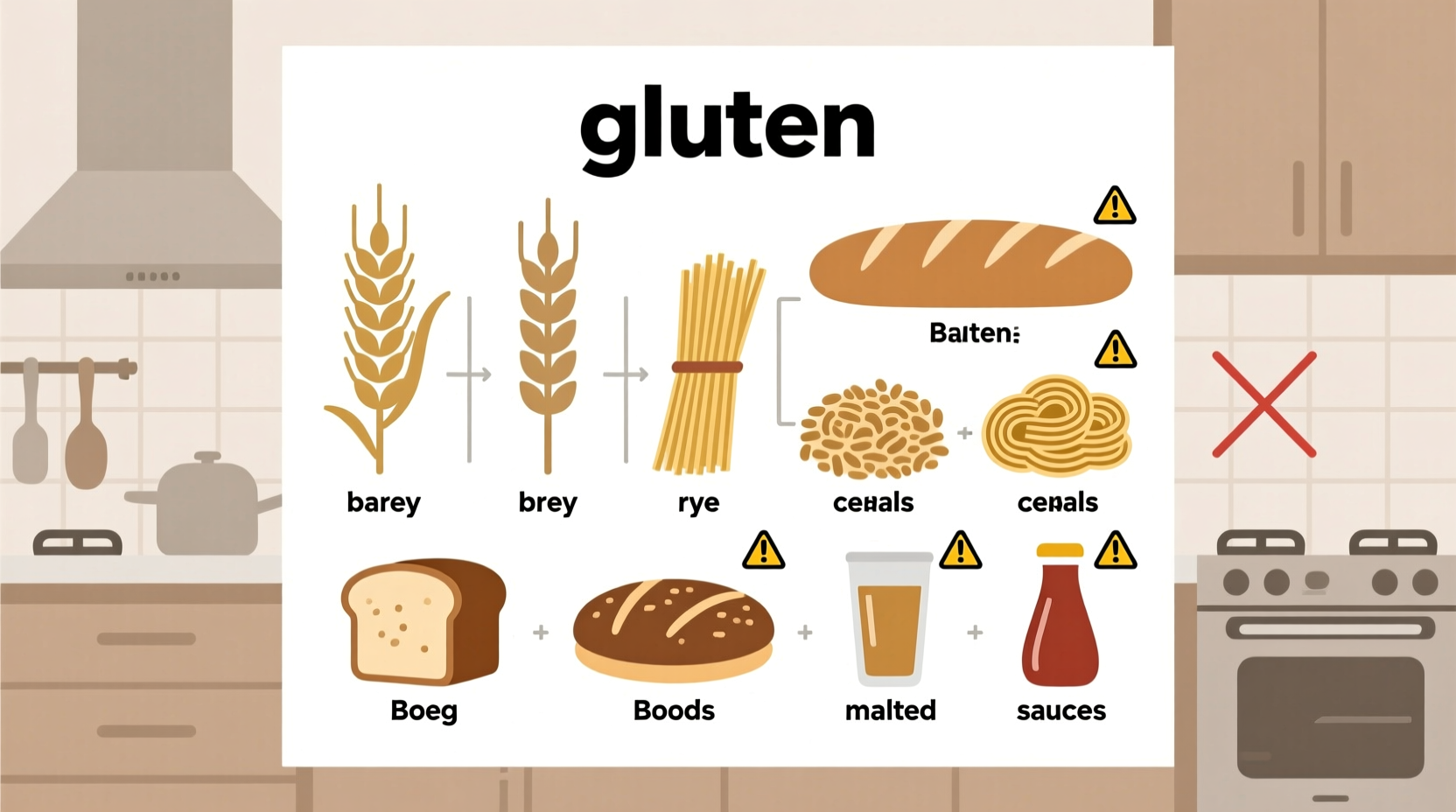Gluten is found in wheat, barley, rye, and their derivatives. Common gluten-containing foods include bread, pasta, cereals, baked goods, beer, and many processed foods. Hidden sources often appear in sauces, soups, processed meats, and even some medications. For those with celiac disease or gluten sensitivity, avoiding these foods is essential for health.
Discover exactly which foods contain gluten with this comprehensive guide. Whether you've recently been diagnosed with celiac disease, have non-celiac gluten sensitivity, or are cooking for someone who needs to avoid gluten, you'll gain immediate clarity on what to avoid and how to spot hidden gluten sources. This evidence-based resource gives you the practical knowledge to navigate grocery stores, read labels confidently, and maintain a safe gluten-free diet.
Understanding Gluten and Its Common Sources
Gluten is a protein composite found in certain grains that gives dough its elasticity and helps foods maintain their shape. For the approximately 1% of the population with celiac disease and others with gluten sensitivity, consuming gluten triggers an autoimmune response that damages the small intestine.
The primary gluten-containing grains are:
- Wheat (including all varieties like spelt, kamut, farro, and durum)
- Barley
- Rye
- Triticale (a wheat-rye hybrid)
| Gluten-Containing Grains | Common Products Made With Them | Gluten-Free Alternatives |
|---|---|---|
| Wheat (all varieties) | Bread, pasta, cereals, baked goods, crackers | Rice, corn, quinoa, buckwheat |
| Barley | Malt, beer, soups, food coloring | Millet, sorghum, teff |
| Rye | Rye bread, crackers, some beers | Amaranth, arrowroot, potato starch |
| Triticale | Some specialty breads and cereals | Tapioca, cassava |
Everyday Foods That Typically Contain Gluten
When exploring what foods have gluten in them, start with these common categories that almost always contain gluten unless specifically labeled gluten-free:
Baked Goods and Bread Products
- White and wheat bread
- Bagels, rolls, and buns
- Pastries, cakes, and cookies
- Muffins and quick breads
- Croissants and danishes
Pasta and Noodle Dishes
- Wheat-based pasta (spaghetti, penne, fettuccine)
- Ramen and udon noodles
- Egg noodles
- Asian wheat noodles
Breakfast Foods
- Most breakfast cereals
- Pancakes and waffles
- French toast (unless made gluten-free)
- Cereal bars

Hidden Sources of Gluten You Might Not Expect
Many people searching for what foods have gluten in them don't realize how many processed foods contain hidden gluten. These ingredients often serve as thickeners, binders, or flavor enhancers:
Processed Foods with Surprising Gluten Content
- Soy sauce (traditionally made with wheat)
- Teriyaki sauce
- Salad dressings and marinades
- Soup bases and canned soups
- Processed meats like sausages and deli meats
- Imitation seafood
- Seasoned snack foods (potato chips, pretzels)
- Some candies and chocolate products
Non-Food Items That May Contain Gluten
While researching what foods have gluten in them, remember that gluten can appear in unexpected places beyond food:
- Medications and supplements (as binders)
- Lip balms and cosmetics
- Play dough (a concern for young children)
Reading Labels to Identify Gluten
Since 2006, the FDA has required wheat to be clearly identified on food labels due to the Food Allergen Labeling and Consumer Protection Act. However, barley and rye don't have the same labeling requirements, making identification more challenging.
Look for these terms that indicate gluten presence:
- Modified food starch (unless specified as corn or potato)
- Malt or malt flavoring (typically from barley)
- Dextrin (may be wheat-based)
- Hydrolyzed vegetable protein (if wheat-derived)
- Seasoning or natural flavors (could contain gluten)
| Label Term | Gluten Source | Gluten-Free Alternative |
|---|---|---|
| Soy sauce | Wheat | Coconut aminos, tamari (certified GF) |
| Malt vinegar | Barley | Apple cider vinegar, rice vinegar |
| Bouillon cubes | Wheat fillers | Homemade broth, certified GF bouillon |
| Flour tortillas | Wheat | Corn tortillas, GF tortillas |
Timeline of Gluten Awareness and Labeling Standards
Understanding the evolution of gluten awareness helps explain why identifying gluten-containing foods has become more straightforward in recent years:
- 1950s: Researchers first identify wheat proteins as the cause of celiac disease
- 1970s: Gluten-free diet established as the only treatment for celiac disease
- 2004: FDA begins working on gluten-free labeling standards
- 2006: Food Allergen Labeling and Consumer Protection Act requires wheat labeling
- 2013: FDA establishes "gluten-free" labeling standard (less than 20 ppm gluten)
- 2020s: Increased availability of certified gluten-free products in mainstream grocery stores
Cross-Contamination: An Often Overlooked Risk
Even when you know what foods have gluten in them, cross-contamination remains a significant concern. This occurs when gluten-free foods come into contact with gluten-containing foods or surfaces. Common scenarios include:
- Using the same toaster for gluten-free and regular bread
- Cooking gluten-free items in the same oil used for breaded foods
- Using shared cooking utensils without thorough cleaning
- Buying bulk bin products where scoops are shared
The Celiac Disease Foundation recommends maintaining separate cooking areas and utensils when preparing gluten-free meals in households with mixed diets. When dining out, always inform staff about your gluten sensitivity and ask about their cross-contamination prevention protocols.
Practical Tips for Identifying Gluten When Grocery Shopping
Use these actionable strategies to confidently identify gluten-containing foods during your next shopping trip:
- Start with perimeter shopping: Fresh produce, meat, fish, and dairy typically don't contain gluten unless processed or seasoned
- Look for certification labels: The Gluten-Free Certification Organization (GFCO) seal indicates products tested to contain less than 10 ppm gluten
- Check "may contain" statements: While voluntary, these warnings indicate potential cross-contamination
- Call manufacturers: When in doubt, contact the company directly to verify ingredients and processing methods
- Create a safe brand list: Note which brands consistently offer reliable gluten-free options
When Gluten-Free Labeling Can Be Misleading
Not all products labeled "gluten-free" are equally safe for those with celiac disease. The FDA's standard allows up to 20 parts per million (ppm) of gluten in products labeled gluten-free, which is generally safe for most people with gluten issues. However, some highly sensitive individuals may react to even these low levels.
The National Institutes of Health notes that products certified by third-party organizations like GFCO often have stricter standards (typically 10 ppm or less). For those with extreme sensitivity, look for products specifically labeled "certified gluten-free" rather than just "gluten-free."
Building a Safe Gluten-Free Pantry
Creating a well-stocked gluten-free kitchen makes avoiding gluten-containing foods much easier. Focus on these naturally gluten-free staples:
- Rice (white, brown, wild)
- Corn products (polenta, corn tortillas)
- Quinoa, amaranth, and buckwheat
- Potatoes and sweet potatoes
- Legumes (beans, lentils, chickpeas)
- Nuts and seeds
- Fresh fruits and vegetables
- Unprocessed meats and fish
For baking and cooking substitutes, keep these gluten-free flours on hand:
- Rice flour
- Almond flour
- Cornstarch
- Tapioca starch
- Arrowroot powder
Frequently Asked Questions
Below are answers to common questions about gluten-containing foods. These provide quick reference for specific concerns you might have:
Are oats gluten-free?
Plain oats are naturally gluten-free but are often contaminated with wheat during growing or processing. Look for oats specifically labeled "gluten-free," which have been processed in dedicated facilities. The Celiac Disease Foundation recommends choosing certified gluten-free oats, as some people with celiac disease react to avenin, a protein in oats similar to gluten.
Does soy sauce contain gluten?
Traditional soy sauce contains wheat and therefore gluten. However, tamari is a wheat-free alternative that's typically gluten-free (check labels to confirm). Coconut aminos provide another popular gluten-free alternative with a similar flavor profile. Always verify with "gluten-free" labeling as some soy sauce alternatives may still contain gluten.
Can I trust products labeled 'wheat-free' to be gluten-free?
No, 'wheat-free' does not mean gluten-free. A product can be wheat-free but still contain barley, rye, or other gluten-containing ingredients. Only products specifically labeled 'gluten-free' have been verified to meet gluten-free standards. The FDA requires clear labeling of wheat as an allergen, but other gluten-containing grains don't have the same labeling requirements.
Are French fries gluten-free?
Potatoes are naturally gluten-free, but many restaurants cook French fries in the same oil as breaded foods, causing cross-contamination. Some frozen French fries contain wheat starch or are processed in facilities with gluten. Always ask about preparation methods when dining out, and check labels carefully for frozen products. Dedicated gluten-free fryers are essential for safe French fries in restaurant settings.
Do alcoholic beverages contain gluten?
Beer made from barley, wheat, or rye contains gluten. Distilled spirits like vodka, gin, and whiskey are generally considered gluten-free after distillation, though some people with high sensitivity may react. Wine, cider, and gluten-free beer made from alternative grains are safe options. Always check labels and be cautious with flavored spirits that may contain added gluten-containing ingredients.











 浙公网安备
33010002000092号
浙公网安备
33010002000092号 浙B2-20120091-4
浙B2-20120091-4